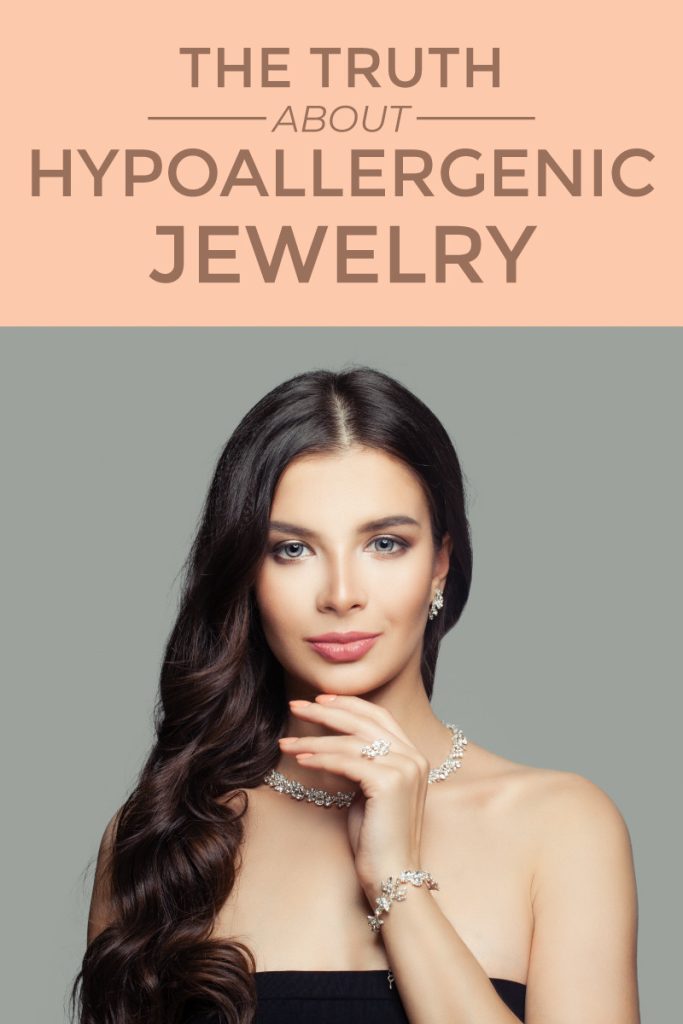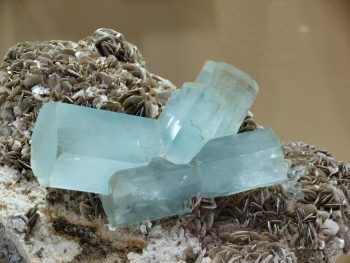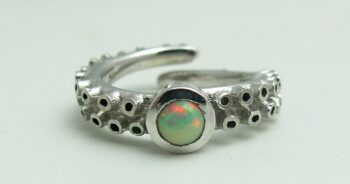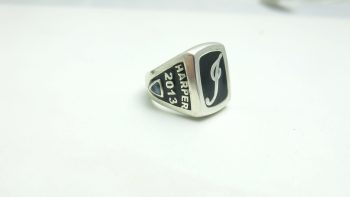The Truth About Hypoallergenic Jewelry
It can make your heart drop when you first notice that a new piece of jewelry is turning your finger green, giving you a rash, or making you itch. It happens and is not uncommon. What you are experiencing is an allergic reaction to your jewelry. And unfortunately, you can still have these reactions when jewelry is “supposed” to be hypoallergenic. As custom jewelers, we get a lot of people who want something truly hypoallergenic made for them. And this is after they have tried everything labelled as hypoallergenic at the chain stores.
But luckily, even those with metal allergies can still wear jewelry like everyone else. In this post, we will discuss what you truly need for Jewelry that is Hypoallergenic, where to find it, and what it costs.

What Causes Metal Allergies
Metal allergies, also known as allergic contact dermatitis, occur when the immune system reacts to certain metals. The most common metals that cause allergies are nickel, copper, cobalt, and chromium. These allergies can develop over time or may be present from birth. The exact cause of metal allergies is not fully understood, but it is believed to be a combination of genetic and environmental factors. It is important to note that not everyone will develop an allergy to metals, as individual susceptibility varies.
While nickel and chromium are not commonly used in jewelry; nickel and copper are. Nickel allergies are the most common metal allergy. And unfortunately, it is also one of the most widely used alloys for white metals. A nickel allergy can cause a variety of uncomfortable and sometimes painful reactions. The most common symptoms of nickel and metal allergies are skin rashes, hives, and itching. In some cases, an allergic reaction can be more severe and cause swelling, redness, and blisters.
What Is Hypoallergenic Jewelry
Hypoallergenic jewelry is a type of jewelry that is specifically designed to minimize the risk of causing an allergic reaction. It is made from materials that are less likely to irritate sensitive skin, such as nickel-free metals, titanium, or surgical stainless steel. These materials are known for their hypoallergenic properties, meaning they are less likely to cause an allergic reaction compared to other metals commonly used in jewelry.
People with sensitive skin or allergies to certain metals often opt for jewelry that is hypoallergenic to avoid any discomfort or irritation. By choosing hypoallergenic options, individuals can still enjoy wearing stylish and fashionable jewelry without worrying about any adverse reactions. It is important to note that while hypoallergenic jewelry reduces the risk of allergies, it does not guarantee that everyone will be completely allergy-free.
Some common examples of hypoallergenic metals include titanium, stainless steel, platinum, and gold. However, stainless and titanium are not metals that custom jewelers can work in. But for mass produced jewelry, they are good options. Platinum and gold, although more expensive, are also hypoallergenic and the most used in high-end jewelry. Overall, these metals provide a range of choices for individuals seeking hypoallergenic options for their accessories.
Gold
Gold is known for its hypoallergenic properties, making it a popular choice for those with sensitive skin. Unlike other metals, gold is less likely to cause allergic reactions or skin irritations. This is because gold is a noble metal, meaning it doesn’t react with other substances. It is also non-toxic and doesn’t contain any harmful chemicals that can trigger allergies. Therefore, wearing gold jewelry or using gold-based skincare products can be a safe and comfortable option for individuals with allergies or sensitivities.
In addition to being hypoallergenic, gold also has soothing and healing properties for the skin. It has been used in traditional medicine for centuries to treat various skin conditions, such as rashes, eczema, and inflammation. Gold nanoparticles have been found to have anti-inflammatory effects, which can help reduce redness and irritation. Furthermore, gold can improve blood circulation and stimulate collagen production, promoting healthy and youthful-looking skin.
Karat Gold
There is a caveat with gold though. Gold, especially white gold, is often alloyed with other metals to increase its strength and durability. However, it’s important to note that some individuals may still have allergic reactions to certain alloys, such as nickel or copper, which are commonly used in gold jewelry. If you have a known allergy to these metals, it’s best to opt for an alloy that doesn’t contain the metal you are allergic to.
Gold alloys that are hypoallergenic are a popular choice for individuals with sensitive skin. It is important to note that not all gold alloys are hypoallergenic, so it is recommended to look for specific alloys that are labeled as such. These alloys are typically made by combining pure gold with other metals such as palladium or platinum. Platinum and palladium alloyed gold is more durable and less likely to cause an allergic reaction. Some common hypoallergenic gold alloys include 18k white gold, 14k rose gold, and 22k yellow gold. These alloys offer a beautiful and safe option for those with allergies to traditional gold jewelry.
The only drawback to those alloys is that they are more expensive. These metals are also more difficult to work with that traditional alloys. So, you can expect to pay a 10-20% premium for a hypoallergenic alloy.
Palladium
Palladium is a metal that possesses hypoallergenic qualities, making it an excellent choice for individuals with sensitive skin or metal allergies. One of the main reasons why palladium is hypoallergenic is because it is a pure metal, meaning it does not contain any alloys or impurities that could potentially cause an allergic reaction. Additionally, palladium is a member of the platinum group of metals, which are known for their biocompatibility and low reactivity with the human body. This means that palladium is less likely to cause irritation or allergic reactions when it comes into contact with the skin.
The only drawback to palladium is the cost. IT is more expensive than platinum. It is also more difficult to work in and many casters won’t or can’t. However, overall, the hypoallergenic qualities of palladium make it a good choice for jewelry, particularly for those who have had negative reactions to other metals in the past.
Palladium Alloys
Pure palladium is brittle, so it must be mixed with something to harden it. The common alloys for palladium use nickel and copper, both of which can cause reactions. Palladium alloys can be made hypoallergenic by combining palladium with another hypoallergenic metal. One common method is to mix palladium with a small amount of ruthenium or iridium. This creates a new alloy that retains the desirable properties of palladium while retaining the hypoallergic quality.
Platinum
Platinum is known for its hypoallergenic qualities. This precious metal is an excellent choice for individuals with sensitive skin or allergies. Unlike other metals, platinum does not contain any allergenic substances that can cause skin irritation or allergic reactions. Its purity and inert nature make it a safe and comfortable option for jewelry, especially for those who are prone to allergies. Whether it’s a platinum ring, necklace, or earrings, you can enjoy wearing platinum without worrying about any adverse skin reactions.
In addition to being hypoallergenic, platinum also offers other benefits. It is highly durable and resistant to tarnish, making it a long-lasting investment. Platinum’s strength and density ensure that it can withstand everyday wear and tear without losing its shine or shape. This makes it an ideal choice for engagement rings and wedding bands that are meant to be worn every day. Furthermore, platinum’s natural white color enhances the brilliance of diamonds and other gemstones, making them appear more vibrant and radiant.
Platinum is expensive as well, but not as much so as palladium. Platinum rings are generally 90-95% platinum vs 58.5% for 14K gold. That means a lor mote precious metal. Platinum is also more difficult to work with than gold or silver. So it also commands a premium for that.
When it comes to caring for platinum jewelry, it is relatively low-maintenance. Regular cleaning with mild soap and warm water is usually sufficient to keep it looking its best. However, it is advisable to avoid using harsh chemicals or abrasive cleaners, as they can damage the metal. If you notice any scratches or signs of wear, it is best to have your platinum jewelry professionally polished by a jeweler. With proper care, your platinum jewelry can retain its beauty and hypoallergenic properties for a lifetime.
Platinum Alloys
Again, pure platinum needs to be alloyed with another metal to make it less brittle. Platinum can be alloyed with several metals to make it hypoallergenic. One common alloy is platinum with palladium, which creates a durable and hypoallergenic material. Another option is platinum with ruthenium, which also provides hypoallergenic properties. Additionally, platinum can be alloyed with iridium, creating a strong and hypoallergenic metal. These alloys are often used in jewelry making, ensuring that individuals with sensitive skin can enjoy platinum pieces without any allergic reactions.
Hints You Require Hypoallergenic Jewelry
Jewelry metal allergies can cause discomfort and irritation for those who are sensitive. There are several signs to look out for if you suspect you may have a jewelry metal allergy. One common sign is redness and itching around the area where the jewelry comes into contact with the skin. Another sign is the development of a rash or small bumps on the skin. In some cases, blisters or swelling may also occur. If you experience any of these symptoms, it is advisable to remove the jewelry and consult a dermatologist for further evaluation and guidance. You should also look into wearing only Hypoallergenic Jewelry.
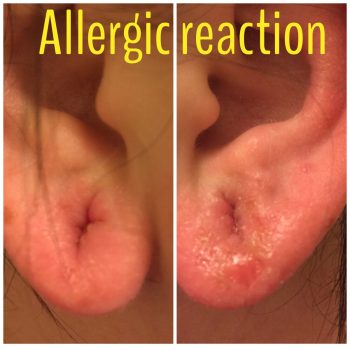
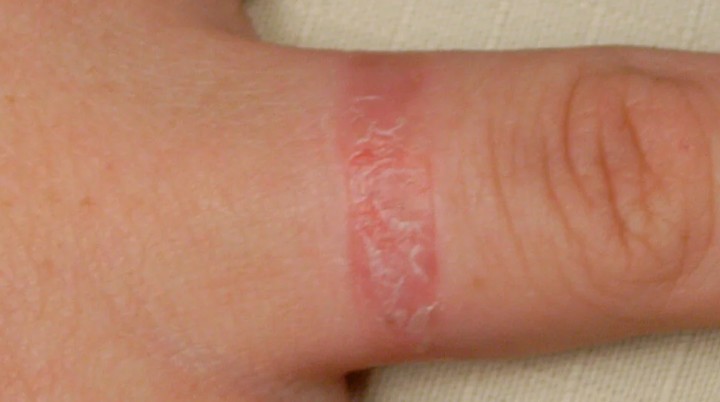
We Can Create Truly Hypoallergenic Jewelry
If you have tried all of the retail jewelry labeled as Hypoallergenic and are still having issues, it is time to look into custom jewelry. We can cast anything we make using whatever metals work best for you. Why suffer reactions and mass produced jewelry? We can create something Hypoallergenic that shows your personality and style.
You can view our portfolio of custom engagement rings or custom pendants to look for ideas. Or you can contact us with your own idea.
